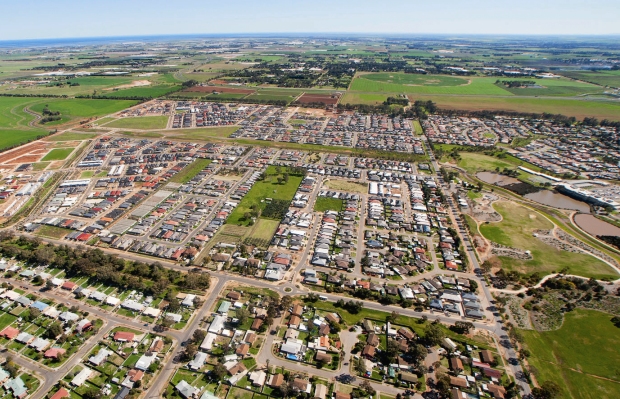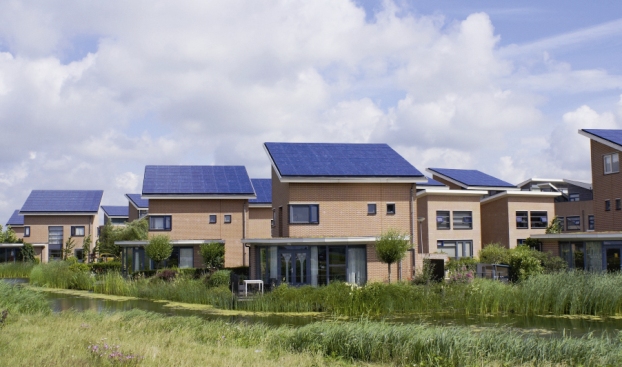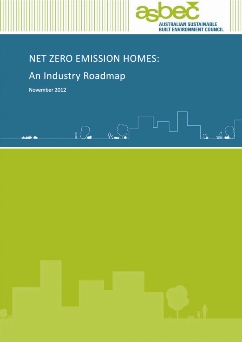The Net Zero Emissions Homes initiative may well be one of the most exciting projects to have graced the pages of Environ in the past decade.
Not because it is, of itself, new, innovative or groundbreaking. It's not. In fact, one of the documents supporting the project purposively sets out to show that it's all been done before.
No, what puts a spring in my step about this proposal is that it reads like it wants to succeed. And it just might do so, because it springs forth from the loins of some heavy hitters in the building game, who have come together as the Australian Sustainable Built Environment Council (ASBEC).
For the past 20 years I've spruiked eco-design, as a product and graphic designer, manager, consultant, lecturer, writer and editor. Oftentimes it's felt like I've been knocking my noggin against a non-reverse brick wall.
Usually my articles are written with a degree of professional detachment, but Zero Emissions Homes has me enthralled. Since the first issue of the Environ, back in September 2002, when it was a magazine supplement for BPN, I've provided articles for every edition. Yet, with Zero Emissions Homes it finally feels like the whole building industry could be headed somewhere important.

Andrews Farm
In short, ASBEC would like to see all Australian residential buildings (new and old) contributing to net zero carbon emissions by 2030.
How might the person on the street define a zero carbon house? "If operated as designed, the only greenhouse gas emissions from this home will be from the appliances and equipment that you bring with you when you move in. There will be no emissions from running the built-in heating and cooling, water heating, lights, stovetop and oven."
This is one mammoth undertaking. Akin to Australia putting the proverbial 'man-on-the-moon.' Except that particular mission focused a nation's considerable federal resources on getting only two men to an end point. And still it took the National Aeronautics and Space Administration (NASA) eleven years to accomplish their goal.
In contrast, ASBEC have seventeen years to see what is estimated to be almost 29 million Australians ensconced in about 12 million households operationally free of greenhouse gas emissions.
Given the magnitude of this Herculean task why should I feel upbeat about its likelihood of success? Because, were it to fail, then hope as a commodity would be in short supply. But, if the disparate members of Australian Sustainable Built Environment Council, such as the Australian Conservation Foundation and the Shopping Centre Council of Australia, can agree on a roadmap for Net Zero Emissions Homes, then optimism still has a wellspring.
In the past couple of years ASBEC have released a small clutch of publications to flesh out the bones of their proposal. In 2011 it was the document: 'Defining Zero Emission Buildings. Then in 2012 appeared 'Net Zero Emission Homes: An Examination of Leading Practice And Pathways Forward,' followed soon after by 'Drivers of Demand for Zero and Towards Zero Emissions Residential Retrofits,' and then later, 'An Industry Roadmap.'

Solar roofs
The nearly 300 combined pages of these papers are written cleanly and concisely in everyday speak. Jargon is happily absent, as is marketing rhetoric. For example, it is explained that, as of March 2012, CSIRO's Australian Zero Emission House project had built three demonstration homes, but only generated two orders from the general public.
ASBEC's report authors are clear eyed about the challenges before the organisation: "Consumer demand for low and zero carbon homes in Australia is low ... "the mainstream mass housing market is still delivering to minimum energy performance standards." And this, "the building industry lacks the skills to deliver low and zero carbon homes at scale for mainstream new housing supply." Elsewhere you'll find the statement, "Further, some of our interview participants spoke of fierce industry resistance to a zero carbon pathway."
 The papers don't gloss over inconvenient truths. They are peppered with upfront observations like: "There is no conclusive evidence that occupants of low or zero carbon homes are more satisfied with their homes than dwellers of homes which have undergone a conventional retrofit or renovation effort." Or "Payback times, which are within the expected stay in the current dwelling, may motivate homeowners to carry out refurbishment investments, although the evidence for this is weak."
The papers don't gloss over inconvenient truths. They are peppered with upfront observations like: "There is no conclusive evidence that occupants of low or zero carbon homes are more satisfied with their homes than dwellers of homes which have undergone a conventional retrofit or renovation effort." Or "Payback times, which are within the expected stay in the current dwelling, may motivate homeowners to carry out refurbishment investments, although the evidence for this is weak."
What comes through the reports is a refreshingly honest assessment of the challenges that lay ahead. I'm impressed that no single silver bullet solution is proposed as the answer to our travail. Umpteen drivers, or motivators, for the transition to zero carbon dwellings are cited, but ASBEC's researchers conclude: "Above all, homeowners need to be engaged around the concept of 'home' rather than on the functional aspect of 'low or zero carbon'." Bearing in mind that, "While the homeowner plays a central role, a concerted effort from all actors in the network is needed to lead to a widespread uptake of low or zero carbon refurbishments of the existing residential building stock."
I do shake my head, recognising my own two decades of educating the populace on the virtues of green design, that the ASBEC rightly identify within their industry roadmap, they must, "Facilitate public awareness of passive solar building methods." Dishearteningly true, but very necessary.
However their call to "Support the development and adoption of a single national rating tool," I do applaud. Here's hoping our eight state and territory governments, and over 560 local councils can realise the benefits of working together on this national imperative.
That above laudable action is but one of the seven Key Deliverables of the proposed roadmap. See Roadmap box for the full list.
What's impressive about the detail behind this 'roadmap' is that, by-and-large it strives hard not to reinvent the wheel. For instance, it proposes creating a web portal that "should include information for builders and consumers on zero carbon homes." That in its early iteration this portal would, "Build on existing Government websites such as Your Home and LivingGreener."
You might recall how the layperson's definition of zero carbon dwelling began, "If operated as designed, ¬", well one of the steps in the roadmap is to, "Support efficient operation of low and zero carbon homes by designing out the need for occupant intervention but with options for consumer education."
To get industry and homeowner buy-in, removal of economical barriers is key. A variety of financing mechanisms is outlined, including the suggestion, "Repayments are made from energy bill savings and arrangements can be made to link the loan to the home so that occupants do not keep paying once they move out."
That the United Kingdom, Canada, Switzerland, California, and other jurisdictions have entered the Zero Emission Homes arena before us doesn't mean we can't learn from, and improve upon, their efforts.
Pulling this off won't be easy, but nor was being one of the first countries to phase out incandescent light bulbs. And remember Australia developed the dual flush toilet, solar photovolatic cells that held the world efficiency record for over a decade, the first seabed-based wave energy converter and was the first country to give women the right to a seat in parliament.
We've been an exemplar in environmental and social innovation before. Here's an opportunity to be so again. Let's seize the day.
Images courtesy of the Green Building Council of Australia

